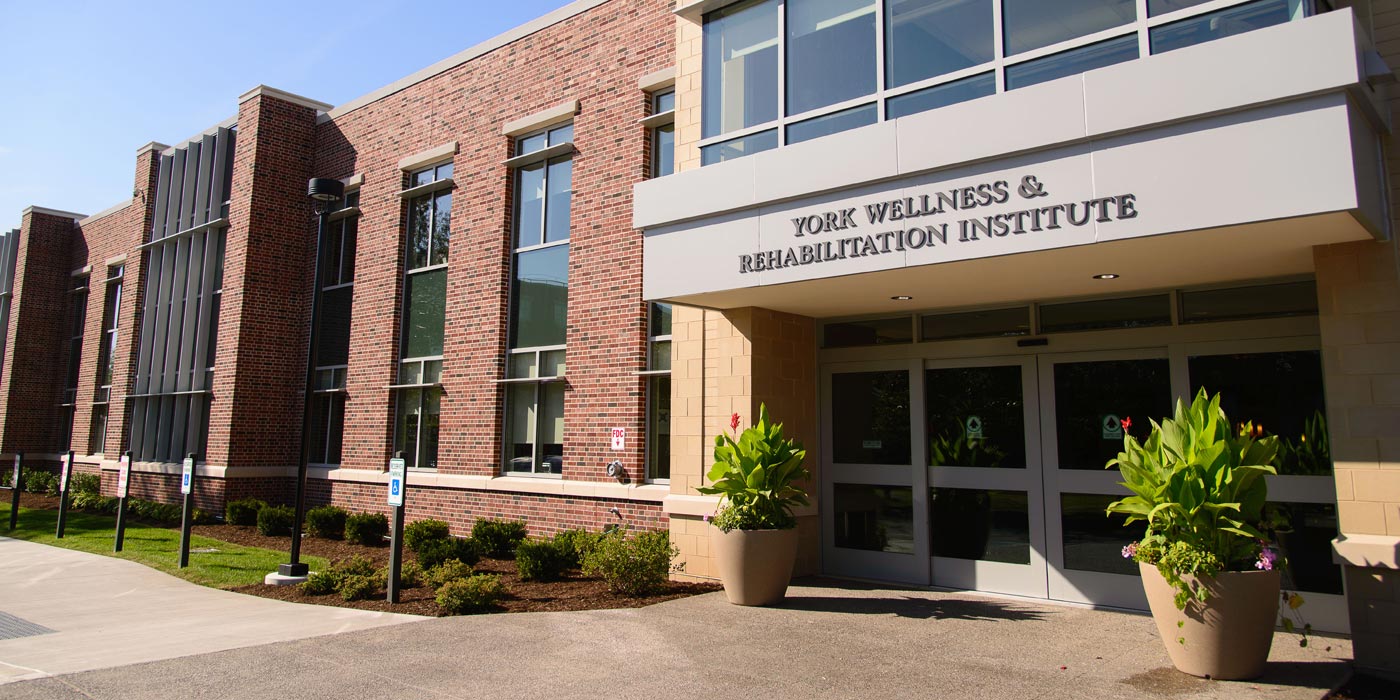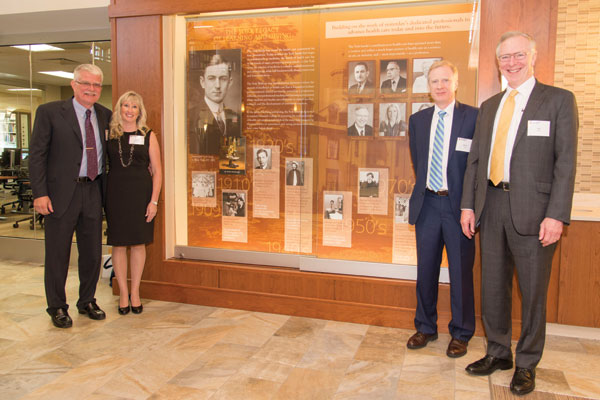ACADEMICS
Newest Building Named
September's debut was only the beginning for the York Wellness and Rehabilitation Institute
by Erich Van Dussen

In a Connections article last year announcing plans for Nazareth’s Wellness and Rehabilitation Institute, the institute was described in theory as a hothouse where patient-centered care would bloom. Now that facility is a reality—having celebrated with a grand-opening ceremony on September 18—and the blossoms are everywhere.
“The students are ecstatic, and that enthusiasm is spreading to their clients,” says Shirley Szekeres, Ph.D., the institute’s director and former dean of the School of Health and Human Services (SHHS). “Everyone is so excited about this new environment, and what we can do now that we couldn’t before.”
At the opening ceremony, the facility’s official name was also announced: the York Wellness and Rehabilitation Institute, named for the York family and paying tribute to the family’s contributions to health care that have spanned four generations and more than a century, as well as Frank York, a Nazareth trustee, who was actively involved in the visioning and planning of this innovative institute and the building’s renovation and expansion.
“He was involved right from the beginning, helping to make sure the building plans would fit our vision,” Szekeres recalls. “I’m so thrilled that he agreed to let us name this for his family.”
The 66,700-square-foot York Institute provides a central home on the Nazareth campus for an array of SHHS disciplines that train future clinical professionals while providing much-needed services to clients in the community.
Alone, these disciplines—speech pathology, physical and occupational therapy, art and music therapy, and more—deliver profound benefits to clients. But within the institute’s collaborative environment, student practitioners are encouraged to find ways to meld the disciplines to create solutions that amount to much more than the sum of their parts.
Emphasizing interprofessional education helps students focus less on mastery of a single discipline and more on patient outcomes, Szekeres says. Along with their traditional classroom and clinical training, SHHS students are encouraged to think creatively about ways to combine their disciplines for the good of their patients.
And ideas are already filling the corridors of the institute—including one example that’s already in the works.
“We have a lot of talent among our clients—there are musicians and poets, for example—and our brain injury clinic has tried to showcase that talent in the past, but it’s been a challenge,” Szekeres says. “Now the students are going to use the [institute’s] lobby as an area where the clients can perform in their areas of expertise.” Clinical work during the semester will align with the goal of preparing these client performers for their lobby debut.
Next summer, the York Institute will be the center of an even bigger event: an international conference, Innovations in Interprofessional Collaboration: Individual, Community, and Global Engagement, set for June 16–18, 2016. The event, planned by SHHS faculty, aims to bring wellness professionals from around the world to the Nazareth campus—and it will be interprofessional in spirit as well as in name.
“We want to encourage dialogues and discussions, so everyone who attends will get a true sense of the rich experience that comes from real collaboration,” says Szekeres. “This is the kind of thing we always wanted to happen, but we never had the opportunity to put it all together before.”
Erich Van Dussen is a freelance writer in Rochester, New York.

Members of the York family celebrate the institute’s grand opening. Left to right: Frank York, Kathy Garen, Gerald York, and James York.